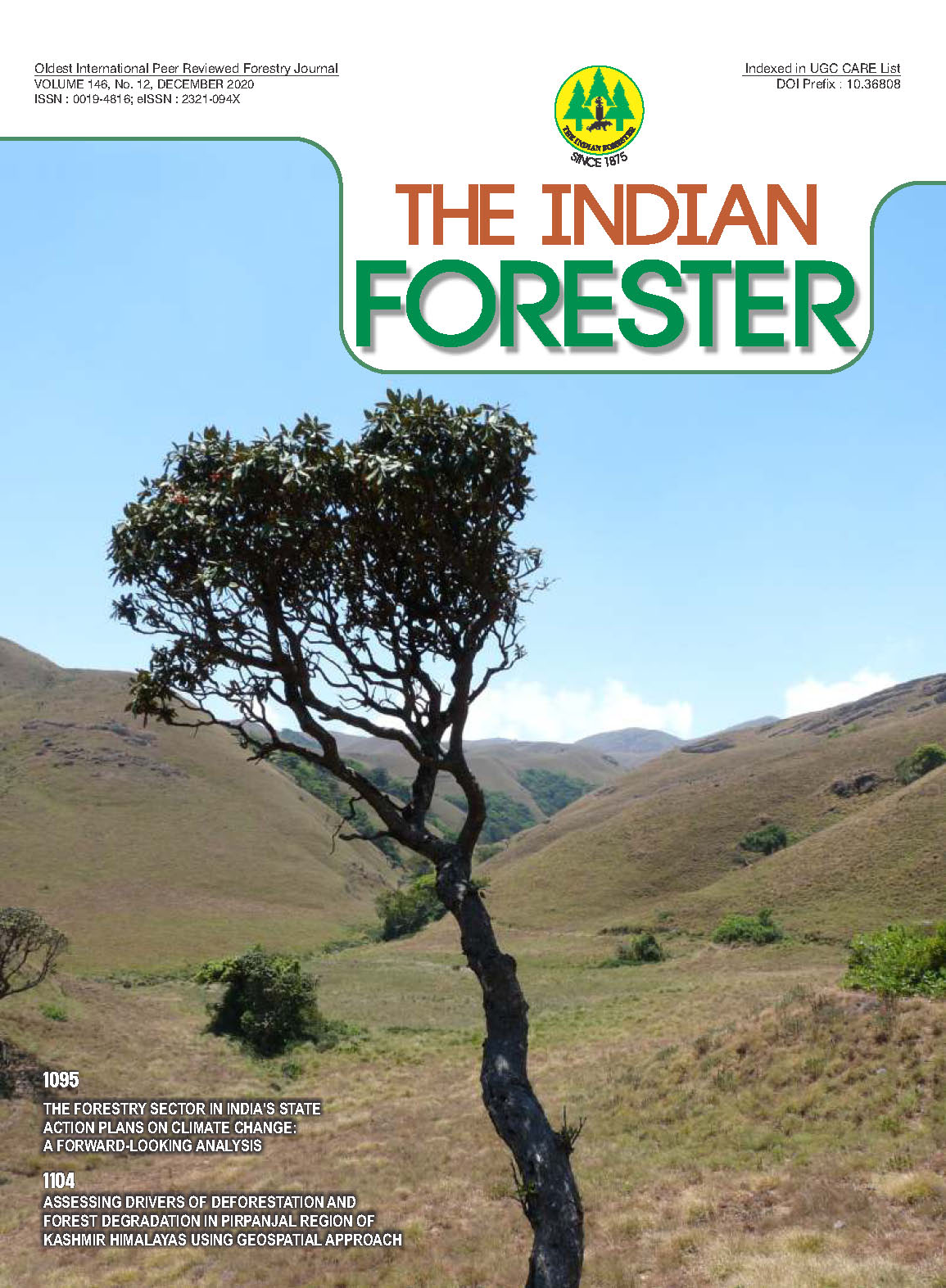Structural Assemblage of Avian Community in Manasbal belt, Jammu and Kashmir
DOI:
https://doi.org/10.36808/if/2020/v146i12/156771Keywords:
Avifauna, Manasbal, Nesbal, Diversity, Hill, Evenness.Abstract
Manasbal belt, located in District Ganderbal of Jammu and Kashmir, serves as an attraction for different bird species due to the presence of good forest cover and the deepest fresh water lake of India (Manasbal lake). However, the area remains unexplored as far as avian diversity is considered. To know the status and diversity of birds in Manasbal belt of Jammu and Kashmir, a study was conducted from December 2019 to February 2020. The observations revealed that the area provides habitat for about 51 species of birds belonging to 14 orders and 25 families. The highest diversity was observed at study site II followed by study site III and study site I. Family Anatidae (n=8) has the highest number of species followed by Accipitridae (n=5), Corvidae (n=4), Muscicapidae (n=4) and so on.References
Gaston A.J. (1975). Estimating bird population, Journal of the Bombay Natural History Society, 72: 271-283.
Grimmett R., Inskipp C. and Inskipp T. (2016). Birds of Indian Subcontinent. Bloomsbury publishing India, 528 pp.
Hussain A., Rao R.J. and Singh H. (2012). Diversity of Waterbird in Wular lake Jammu and Kashmir, India, Advances in Bioresearch, 3(3): 81-86.
Jan I., Shah G.M. and Jan U. (2016). Diversity and Abundance of Avifauna of Haigam Wetland and Its Adjoining Areas, J&K, India, International Journal of Innovative Research in Science, Engineering and Technology, 5(11): 19485-19494.
Khan M.A., Shah M.A., Mir S.S. and Suzana B. (2004). The environmental status of a Kashmir Himalayan wetland game reserve: aquatic plant communities and eco-restoration measures, Research and Management, 125-132.
Lee P. and Rotenberry J.T. (2005). Relationships between bird species and tree species assemblages in forested habitats of eastern North America, Journal of Biogeography, 32: 1139-1150.
Noor A., Mir Z.R., Khan M.A.R., Kamal A., Habib B., and Shah J.N. (2014). Summer population estimates and diversity of some common bird species along the bank of Dal Lake, Srinagar, Jammu and Kashmir, Podoces, 9(2): 47-53.
Rashid I., Farooq M., Mohammad Muslim M. and Romshoo S.A. (2013). Assessing the Impact of Anthropogenic Activities on Manasbal Lake in Kashmir Himalayas, International journal of environmental sciences, 3(6): 2036-2047.
Shah G.M. and Qadri M.Y. (1988). Food of Mallard, (Anas platyrhynchos) at Hokarsar Wetland, Kashmir, J. Bombay Nat. Hist. Soc., 85(2): 325-331.
Shannon C.E. and Weaver W. (1949). The Mathematical Theory of Communication. University of Illinois, Urbana, Illinois.
State of India's Birds (2020). Range, trends and conservation status. The SoIB Partnership. Pp 50. www.stateofindiabirds.in
Walwert M., Mardiastuti A. and Muhlenberg M. (2004). Effects of land use on bird species richness in Sulawesi, Indonesia Consv. Biol., 18:1339-1346.
Downloads
Downloads
Published
How to Cite
Issue
Section
License
Unless otherwise stated, copyright or similar rights in all materials presented on the site, including graphical images, are owned by Indian Forester.





